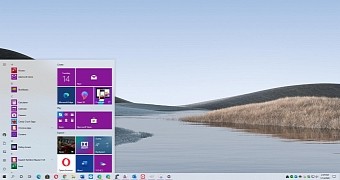Microsoft has been trying to push users to Windows 10 for several years already, but it’s not a secret that many users tried to resist the migration, sticking with Windows 7 for as long as possible.
Today, however, Windows finally becomes all about Windows 10.
The death of Windows 7 represents an important milestone not only for users whose devices need to be upgraded, but also for Microsoft, as the company can now leave behind older operating systems and focus on the modern experience from one end to another.
Windows 7 has long been a tough nut to crack, especially because it doesn’t necessarily align with Microsoft’s next-generation Windows ambitions. The lack of a Microsoft Store and apps like Cortana turned Windows 7 into the last OS version providing users with the traditional Windows experience on the desktop.
And as of today, this is officially gone.
Windows 7 no longer receives support after the January 14 Patch Tuesday cycle, which means that devices where this OS version is installed need to be upgraded to Windows 10 for continued support.
And it’s not all about security here. An unsupported Windows version means people using these devices are missing out on the latest features, technologies, and apps that Microsoft and its partners release. The majority of apps will continue to run on Windows 7 for at least one more year, but sooner or later, most developers would move the focus to Windows 10 anyway.
In other words, it’s just a matter of time until Windows 7 takes the place of Windows XP and loses app support, at which point it would become nearly impossible not to make the switch to Windows 10.
There’s no doubt the next 12 months or so will be a struggle for Microsoft to convince everyone to upgrade. And in most of the cases, one less Windows 7 user means one more Windows 10 user, which for the software giant is a double win. But at the end of the day, killing off Windows 7 and embracing Windows 10 is what will allow the company to continue the Windows as a Service strategy both in the consumer and the enterprise spaces.
Microsoft has a lot to fix, improve, and refine in Windows 10, but Windows 7 going dark means the company has one less thing to worry about.
Going forward, Microsoft will continue to support Windows 8.1 and Windows 10, but the first is projected to get the axe in 2023. Furthermore, Windows 8.1 has only a small market share (less than 3% according to some market research firms), which itself confirms that users themselves prefer Windows 10 when it comes to their next destination when upgrading from Windows 7.
In the last few days, I’ve seen many people claiming that a substantial part of the Windows 7 userbase would migrate to Linux, but I still have my doubts whenever it comes to an avalanche of Windows users joining the Linux side. Most people choose to stick with Windows in order to retain the familiar look and feel, and Linux seems to them an unexplored world they would rather avoid.
Truth be told, Linux has improved a lot in the last decade, and distros like Linux Mint received refinements that make them a more familiar place for Windows users. But just like it happened when Microsoft killed off Windows XP, Linux is unlikely to benefit en-masse from the demise of Windows 7 because of the reasons I mentioned earlier.
Starting today, the traditional Windows experience has evolved to become the modern Windows experience. And for everyone, including Microsoft itself, Windows is all about Windows 10 right now.

 14 DAY TRIAL //
14 DAY TRIAL //